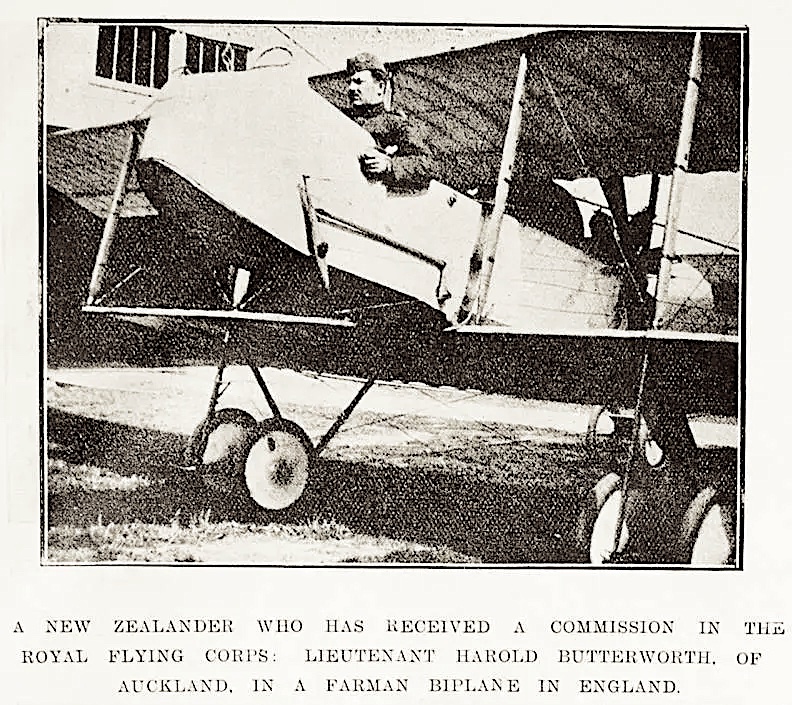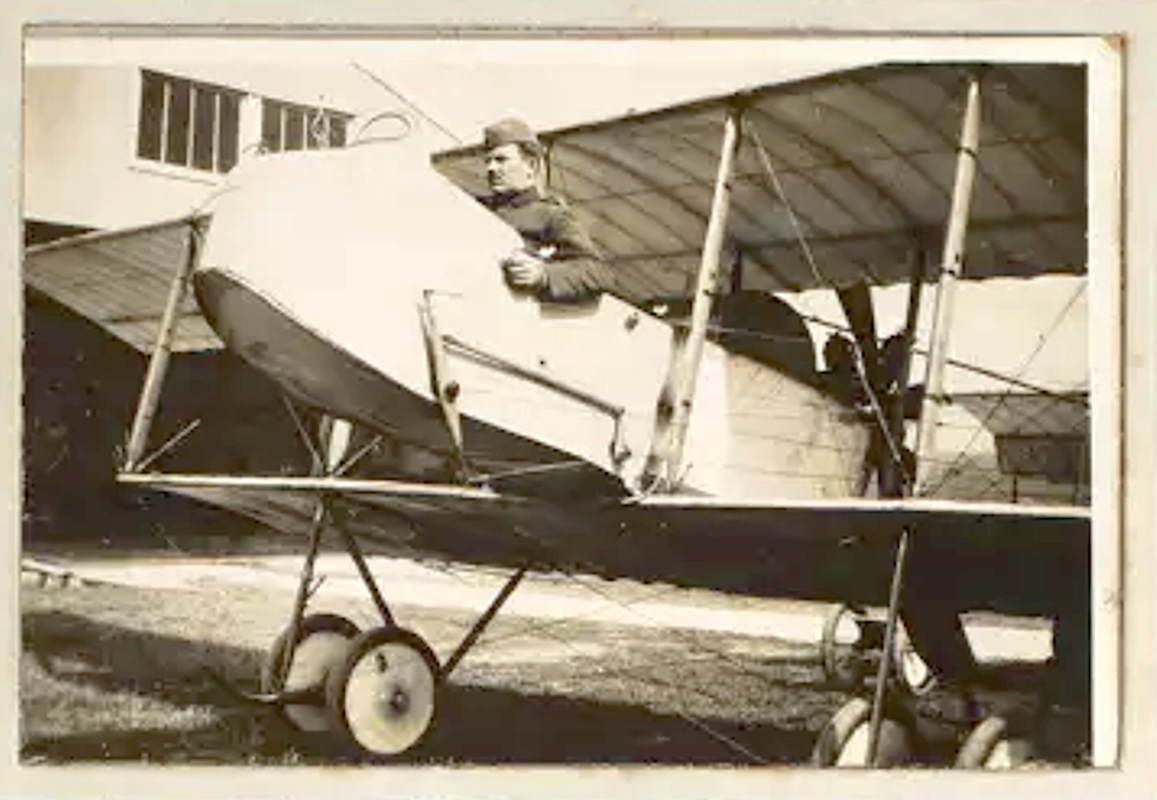'Manurewa'"
More than 800 New Zealanders served as air or ground crew with the Royal Flying Corps, the Royal Naval Air Service and the Royal Air Force. Sixty more joined the Australian Flying Corps. Of these numbers only about 250 of the air and ground crew actually saw service with operational squadrons". Harold Winstone Butterworth was one who became a 'flying bird'.
Butterworth made his first solo flight at Brooklands Aerodrome on 9 July 1915. In the coming months he would note in his personal diary (readable online:
https://www.aucklandmuseum.com/getmedia/9e0bf3dc-ff62-4322-b884-40f70e41462d/MS996), experience with multiple aircraft types, including various Farmans, a Royal Aircraft Factory B.E.2C and B.E.8, a Curtis JN, and Avro, an Armstrong Whitworth, a Martinsyde Scout, a Voisin, and a Vickers Scout and Gunbus. On the day this spotlight went to press Butterworth would find himself in a bit of a pickle on the homefront:
"
I was busy instructing this morn when an inlet valve broke & the machine caught on fire. I landed straight away & with the help of the pupil managed to get the flames out in about 5 min. I managed to keep the flames off the planes & there was not more than 5/- worth of damage done. I landed quite well but the machine had to be towed back because of the engine being broken." (quotes via aucklandmuseum.com)
Ultimately Butterworth was sent to France with No. 18 Squadron RFC and fought in the skies during the Battle of the Somme. He would never return from his final mission on 16 July 1916.
(from the Auckland Weekly News, 25 November 1915):


(image from Butterworth's personal collection via aucklandmuseum.com)